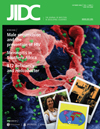A practice for all seasons: male circumcision and the prevention of HIV transmission
DOI:
https://doi.org/10.3855/jidc.192Keywords:
Circumcision, HIV/AIDS, Prevention, VaccineAbstract
HIV/AIDS as a global epidemic has exerted its terrifying influence for quite some time now. Currently, a vaccine for its prevention appears to be near impossible. HIV has spread across the globe without deference to gender, race, religion, or socioeconomic status. Despite a growth in HIV awareness and interventions, there are perplexingly different prevelence rates in different countries with seemingly similar behavioral patterns. In this review we examined these variances in infection rates and found conclusive evidence that male circumcision makes a major difference. Removal of the foreskin of the penis (male circumcision, MC, C) is known to significantly reduce female-to-male HIV transmission through sex, which then decreases male-to-female transmission. Three recent randomized controlled studies from Africa have shown that circumcision offers a 60% to 70% protective effect against heterosexual acquisition of HIV. The protective effect of circumcision against HIV, known since the 1980s, has been confirmed by more than 30 studies before these three famous randomized controlled trials, which are the criterion standard of clinical research. The global epidemiology data clearly indicates a reduction of over 99.9% in HIV prevalence in countries where C rate is over 80%. As we show in this review, MC not only reduces HIV but also other sexually transmitted diseases (STDs). Circumcision’s decisive role in reducing the effect of HIV transmission has been so convincing that it has now been accepted officially by the WHO, UN, and NIH. Moreover, many nations have initiated adult circumcision as a public health measure.Downloads
Published
2008-10-01
How to Cite
1.
Addanki KC, Pace DG, Bagasra O (2008) A practice for all seasons: male circumcision and the prevention of HIV transmission. J Infect Dev Ctries 2:328–334. doi: 10.3855/jidc.192
Issue
Section
Reviews
License
Authors who publish with this journal agree to the following terms:
- Authors retain copyright and grant the journal right of first publication with the work simultaneously licensed under a Creative Commons Attribution License that allows others to share the work with an acknowledgement of the work's authorship and initial publication in this journal.
- Authors are able to enter into separate, additional contractual arrangements for the non-exclusive distribution of the journal's published version of the work (e.g., post it to an institutional repository or publish it in a book), with an acknowledgement of its initial publication in this journal.
- Authors are permitted and encouraged to post their work online (e.g., in institutional repositories or on their website) prior to and during the submission process, as it can lead to productive exchanges, as well as earlier and greater citation of published work (See The Effect of Open Access).








